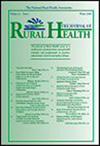Obstetric care in rural critical access hospitals: A domestic application of the World Health Organization Emergency Obstetric Care framework in rural communities
Abstract
Purpose
Pregnancy-related mortality has increased steadily over the last 30 years in the United States; during the same period, rural communities have lost access to care as rural hospitals and obstetric units have shut their doors. Rural critical access hospitals (CAHs) are often the only option for a pregnant person in a rural community needing emergency care. This study aimed to apply a uniform assessment of the capacity of hospitals that do not have obstetric units to meet the emergency obstetric care needs of the rural communities they serve, with the goal of facilitating ongoing obstetric emergency readiness assessments that can be used in the rural context.
Methods
The study team conducted facility assessments across Montana's statewide system of hospital care. The Centers for Disease Control and Prevention (CDC) Levels of Care Assessment Tool (LOCATe) was used in hospitals with an obstetrics unit (N = 25). The team adapted the World Health Organization (WHO) Emergency Obstetric Care (EmOC) framework to assess readiness in hospitals without an obstetrics unit (N = 34) but with Emergency Medical Treatment and Labor Act (EMTALA)-based obligations to patients presenting to emergency departments with obstetric emergencies.
Findings
None of the responding hospitals without obstetric units met criteria indicating readiness to provide comprehensive emergency obstetric care (CEmOC), and only one hospital met criteria indicating readiness to provide basic emergency obstetric care (BEmOC).
Conclusion
Significant work must be done to bring CAHs up to a level of readiness where they can safely and effectively screen, stabilize, and transfer or accept an obstetric emergency. The WHO EmOC framework can provide a starting point for assessing the capacity of hospitals without obstetric units, but a standardized assessment, such as LOCATe, should be developed to improve readiness for obstetric emergencies.

 求助内容:
求助内容: 应助结果提醒方式:
应助结果提醒方式:


